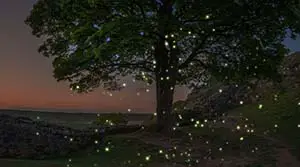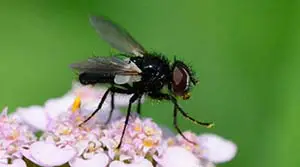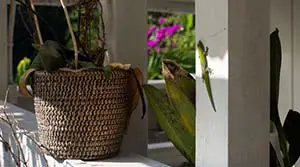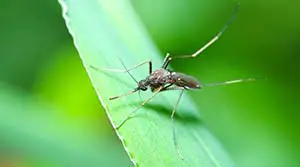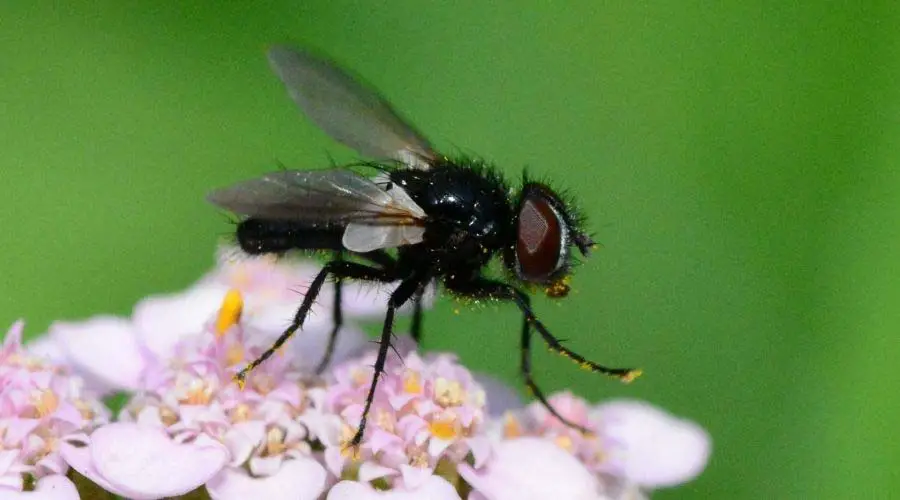
There are so many tiny flying insects in the universe, but man, aren’t they annoying! Most of these little buggers are generalized as gnats; they buzz over your head and get into your face while you sweat and curse. Well, you are certainly not alone.
To get rid of gnats, here’s what to do:
- Trap them using a concoction of vinegar, scented soap, sugar, & water.
- Repel them by administering lemon and vanilla solutions.
- Do some extra cleaning & wrap up food leftovers.
- Eliminate water & moisture ridden environments.
- Add vinegar into the outdoor cleaning water.
Insects should stay out there somewhere, in the woods maybe, but they invade our backyards and homes all the time. What attracts them to your home, you wonder, and how do you get rid of them naturally? Let us find out.
What Are the Tiny Flying Insects in My Home?
Every other springtime, the universe vibrates with life, and as you go about your duties, tiny two-winged insects will buzz over your head and try getting into your eyes, nose, or mouth. You will swat them away, but they are persistent little buggers.
At first, you think less of them, but later, you get mortified to find out that the pestering little creatures are in large swarms, and they are everywhere.
What are they? You want to scream. Why they are in my yard is even more puzzling. Are they small? Like ¼ “in length and slender?
Are they yellow, brown, or black? Do they have stripes on their abdomens? Do they hover around fruits and vegetables while some seem at home in the grass?
Well, most of these tiny insects resemble mosquitoes, but they are not because, unlike mosquitos, they disappear when the temperatures cool down and darkness engulfs the world. Maybe to catch some sleep or something but mostly because they thrive in warmth and moisture.
They reappear when the sun rises when the dew has dried up and the atmosphere bursts with light.
Spring nights are pretty chilly, and gnats are said to perish in cold temperatures. Part of their massive invasions during the springtime is because they love it when temperatures reach a high of 75 degrees Celsius.
How Do You Identify Gnats?
Gnats are of different kinds as you might be mistaken to think that it is one kind of insect. They are not.
The truth is that they are many different species, but because they come to your home for the same purpose and bear a striking resemblance, it becomes easy to refer to all of them like gnats.
Among the species making up “gnats” are those that bite and some that do not.
In general, some insects and flies generalized as gnats fall into the following groups;
| Name | Description |
|---|---|
| Eye gnats | As their name suggests, they are attracted to faces and poke around animals’ eyes, ears, noses, and mouths, including humans. It is because they feed on secretions found in these facial features. |
| Fungus gnats | The name fungus suggests that they thrive in warm but wet environments, making them masters of moist environments, which could easily be a greenhouse or a flower pot in your garden. |
| Sand gnats | It is the category of flies that bite, sting, and suck blood from its victim. They thrive in areas that are sandy-like shores and waterfronts. |
Below are some interesting facts about gnats:
- Adult gnats have a life span of 1-2 weeks.
- They sometimes appear shiny because of their translucent wings projecting their hairless bodies.
- They mainly feed on fruits and vegetables and mushrooms, and if there are any plants planted on pots, they are certainly going to feed on their roots if they thrive in the moisture.
- The males congregate mostly at dusk in swarms, also referred to as ghosts for purposes of mating.
- In the life cycle, some of the gnat larvae are aquatic.
Why Are There So Many Gnats in My Yard?
When warm moist winds run into dry, cool air in February through March, dark heavy clouds gather in the sky, and the heavens pour down in torrents, welcome to springtime! As winter thaws, farmers plant their crops, and gardens tend to their plants.
When the world awakens, animals too awake and frantically begin mating and laying eggs, and in the end, pests manifest in great swarms, and their presence worsens every other year.
In human habitats, it’s hard to pinpoint the main thing attracting all sorts of flies at a given time into your yard. But actually, you have to look for clues.
Gnats are attracted to anything that smells and tastes sweet, which to them will include;
- Fruits
- Flowers
- Vegetables
- Garbage
- Human perspiration
- Scents such a soap, perfumes, lotions, or even hair spray
You might jump to the conclusion that maybe these flies are there because something is dirty or rotting, which could have some truth to it or none at all.
Gnats are attracted by anything far from dirty homes because they even call on very clean and neat households.
Because most of these tiny insects and flies have a strong sense of smell, they quickly get a hold of scents and smells before they even taste them.
Your answer to the following questions will help determine why there are gnats in your yard:
- Is your garbage bin open and food leftovers visible? How often do you empty your trash cans? Gnats and smelly leftovers are the same.
- Are you into gardening? Does your garden feature potted plants? It is particularly so for fungus gnats that feed and breed in plant roots.
- Is your drainage clean? Do you pour hot water to unclog it sometimes?
- Is your yard precipitated by wetness resulting from too many rains and the sun’s warmth on sunny days?
- Is your garden sprouting with flowers?
- Do you have pets or other domestic animals?
The reason gnats could be in your yard could be due to one tiny factor or everything in general.
The problem is that gnats hanging around your yard tend to find their way into the house’s interiors and hover around the kitchen, wet bathrooms, or even in the bedroom.
These will make you feel untidy in a way and drive you crazy with their annoying behavior.
Are Gnats Harmful to Humans?
The only known harm gnats inflict on humans is from gnats that bite or sting for purposes of sucking blood from animals.
Gnats bites just like mosquitos will appear red and bumpy, albeit tiny. But are they dangerous?
The bites might cause you no harm, but in some cases, they may trigger allergic reactions where they become painful, itchy which one will find very irritating.
Most gnats feed on nectar and the sweet stuff, but once in a while, the female responsible for laying eggs will need to partake in some blood which helps them in pro-creation.
When they become allergic, which results from the gnat saliva on your skin, they could be treated at home using home remedies such as washing the affected area using soap and water to wash away germs on the skin and bringing reactions to a halt.
Medically, antihistamines and anti-itch creams are available and act as instant soothers. In extreme cases, some of these bites will blister, and as we know, blisters are filled with fluids or pus, which is recommendable that you should visit a medical facility for treatment.
Gnats will also tend to spoil fresh fruits and vegetables. When they tap their sweet juice from them, they contaminate the foodstuff, which will rot in the end. But, apart from those, gnats are generally harmless.
What is the Lifespan of a Fungus Gnat?
Generally, fungus gnats, like other gnats, have a complete life cycle through metamorphosis; they transition from egg-larvae-pupa and finally adult gnat.
The whole life cycle takes around 18-30 days, but fungus gnat can only exist for between 1-2 weeks as an adult.
Fungus gnats do not sting or suck blood. However, fungus gnats adore plants and seedlings, which they relentlessly feed on.
- They have long legs
- Very similar to the mosquito
- They are either black or grayish
- Their wings are gray but appear smokey
These are the most dangerous species of gnats to have to hang around your garden and especially plants planted in pots.
They will mercilessly feed on the roots of the plants in your garden. As we know, roots supply the plant’s leaf with water and nutrients essential for growth.
It now means that your plants will not have any means of feeding, and in a little while, they will wither and die. So, is there any hope that these buggers will soon perish and your plants will thrive again?
How Do I Get Rid of Gnats in My Yard Naturally?
In their great numbers, gnats make it hard for people to get rid of them because while others are dying, more eggs get laid, and larvae and pupa are transitioning.
The thing about gnats is that they make you feel dirty in your own space, which is infuriating to most, especially if they are clean, organized people.
So how do you get rid of gnats in your yard?

1. Trapping Gnats Using Honey & Vinegar
Have you ever heard that gnats cannot resist honey and vinegar?
The trick lies in placing a pot or container which contains a little bit of honey in the open and watching as gnats scramble unto their death, trying to get a taste of honey in the container.
Another brilliant idea is to mix warm water, scented liquid soap, two tablespoons of apple cider vinegar, and a little bit of sugar.
Starch is sticky, and for this reason, gnats come flying home to their death as they get trapped in the mixture.
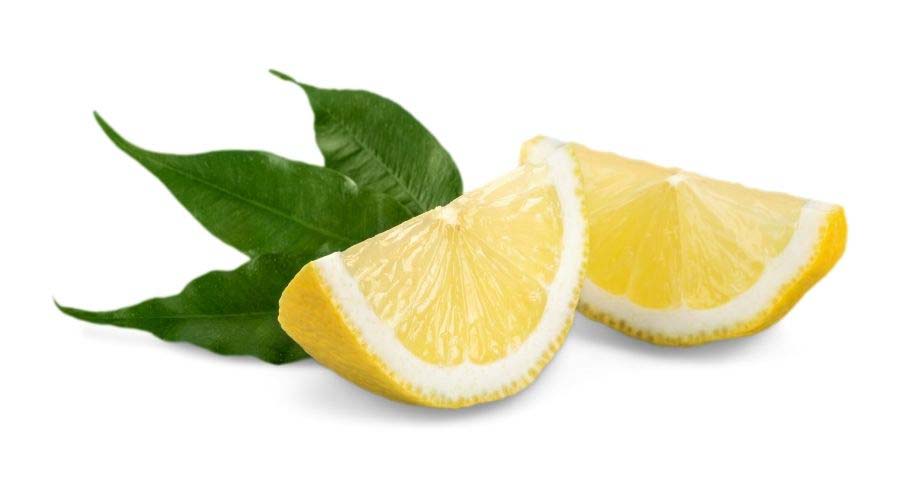
2. Repelling Them Through Bitter Tasting Foods
Because these tiny pesky insects get attracted by anything sweet, it is almost automatic that they will harbor and get repelled by anything that smells bitter or sour.
Lemon, lavender, vanilla, grounded coffee, and the like can be perfect for putting them off. You can administer some of them for sprays based on lemon or vanilla scents.
Add a little bit of vanilla-scented detergents while cleaning your outdoor areas. Gnats will smell the bitter or sour scent and keep away, which could push them out of your yard in the long run.
More often than not, problems instigated by natural products get fixed using alternative natural products.

3. Extra Cleaning
As much as gnats do not visit our home because of dirt, the truth is that soil, especially smelly drainages and untidy trash bins, will keep gnats busy all day long.
As you try to engage in other means of getting rid of them, cleanliness should top the list of your-to-do-list. While cleaning, add detergents that are not sweet to drive the point home better.
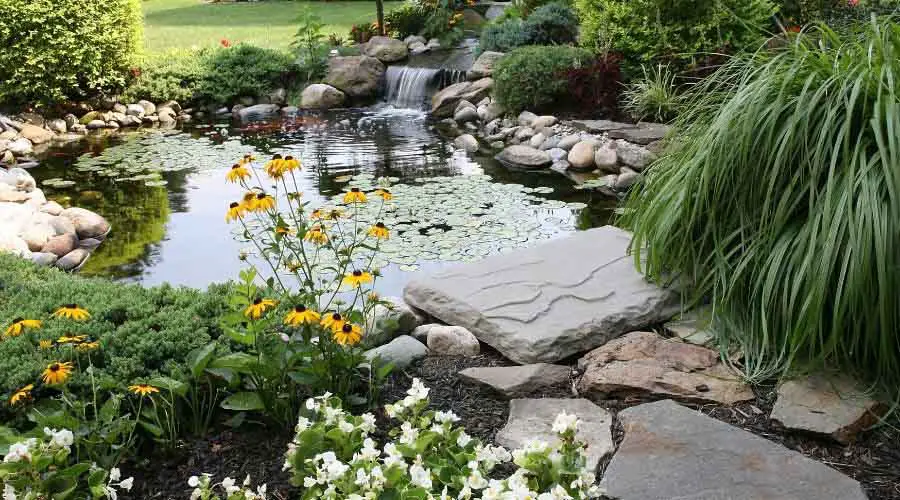
4. Eliminating Moisture & Stagnant Water
Gnats, especially fungus gnats, are fascinated by moist environments. Without them, they won’t feed or procreate and will perish.
Spring is a wet season, but ensuring plants planted in pots do not get saturated in water keeps gnats looking elsewhere. If you have pets that use water bowls, you can drain the water immediately after they stop drinking.
It is essential to keep your home clean and dry always. By doing Tip #3 right, you are automatically putting a check part on tip #4.
5. Avoid Using Scented Skin Products
It is mainly for personal safety. Gnats will not sting or follow you around if you do not smell sweet in your lotion, perfume, or hair spray.
Sometimes can’t avoid skin products, so use unscented ones. They are widely available in drug stores and supermarkets.
You can also buy insect repellant lotions which usually contain scents and chemicals that insects like gnats hate. It will also reduce your chances of being stung by other free-living insects.
How Do You Get Rid of Gnats Permanently?
Some of the most natural ways of getting rid of gnats are to repel them other than trapping them with a scented solution.
But not everybody is patient with some of the methods or is willing to put in the extra work. That is why the most practical solution for them is to exterminate them by administering aerosol pesticides in the backyard.
These chemicals that are available and sold in stores include:
- Resmethrin
- Pyrethrins
- Tetramethrin
Many people spray aerosol pesticides on plants and grass where the gnats inhabit. Because we are talking about the backyard, it is paramount that you do not sprinkle these chemicals onto food-related plants directly on their surfaces.
But because gnats are now in their peak season, which is spring, they will be around for a whole month.
Administering aerosols once or twice will not be as effective as spraying the yard every week for five weeks, and you will forget about them and live peacefully in your personal space.
Final Thought
As you find ways and means of getting rid of gnats from your environment, you must practice personal safety measures against gnat bites by wearing long garments that cover your hands.
Another option is to apply an insect repellant on exposed skin. Gnats have short lifespans, and they usually disappear on their own when temperatures related to summer rise. But who is willing to sit this magnitude of annoyance out?
Most home remedies work, but if you must, gnats are pests that authorities do not bother with, and you are allowed to administer chemical substances on them.
Sources





